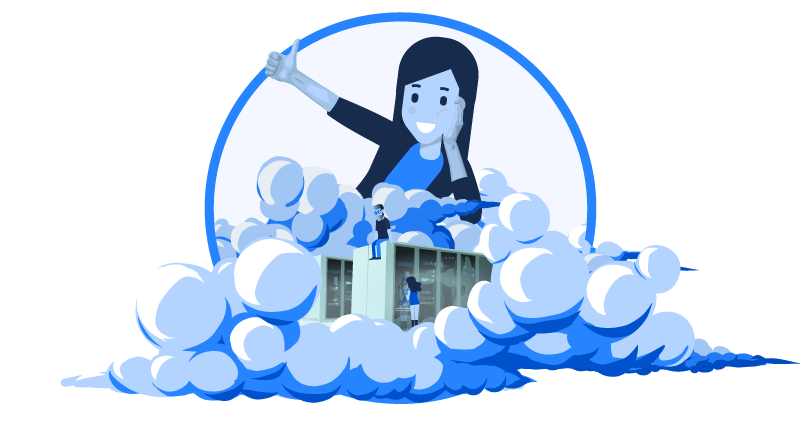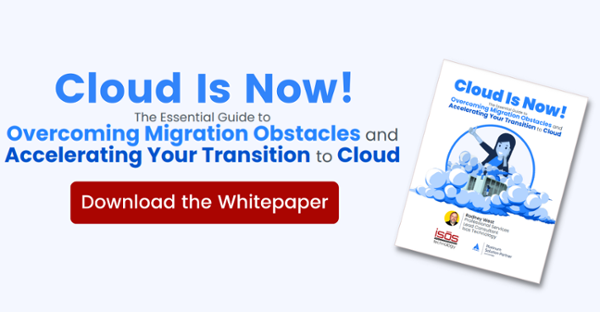 Support for Atlassian Server products ends on February 15, 2024. If you’re already using Atlassian Server products, now's the time to start planning for the required migration to the cloud. If your organization is looking into deploying Atlassian’s powerful tools, you’ll want to start in the cloud from the get-go.
Support for Atlassian Server products ends on February 15, 2024. If you’re already using Atlassian Server products, now's the time to start planning for the required migration to the cloud. If your organization is looking into deploying Atlassian’s powerful tools, you’ll want to start in the cloud from the get-go.
Here’s what else you need to know to successfully migrate to Atlassian Cloud...
1. Get Early Buy-in
Any major change in an organization needs champions across teams and departments, from the C-suite on down. It’s not just about having general support for your cloud migration, rather its about making the entire team feel involved. Team members must be involved in auditing their processes, identifying the features they need, and getting training and testing started early.
Explaining and pitching the move to cloud can intimidate and overwhelm team members who aren't familiar with cloud-based apps, and who are used to working on server apps. So how do you get people onboard and to buy-in? The best way to create champions is to break down exactly what will happen into a clear, attainable roadmap. Being able to develop a roadmap means you must plan your migration carefully, which is where Solution Partners like us can come in handy.
2. Methodically Plan Your Migration
Your migration checklist needs a logical order to ensure that you don’t hit roadblocks, or accidentally duplicate work later in the migration process. It starts with a comprehensive pre-migration assessment, detailing your apps and services inventory, and mapping their dependencies and your current environment.
A complete pre-migration assessment reveals and addresses potential roadblocks. As you begin your migration, regular security, compliance, and legal reviews are critical to avoiding problems on your go-live date. Having a methodical and clear plan will help ease concerns and win the champions needed for a successful migration.
3. App and Workflows May Change
Despite their similarities, your cloud app may differ from your server app for two reasons. Atlassian has and continues to develop improvements in the cloud that aren’t available on server. This includes the most requested enhancements, such as native roadmaps, Jira Automation, improved templates, and more.
Atlassian Marketplace partners have also been adding improved functionality to their cloud apps. Therefore, cloud apps will also feature some differences from their server versions, and some server apps may not be available in the cloud just yet. Use the Jira Cloud Migration Assistant and Confluence Cloud Migration assistant to see what cloud apps are currently available.
Doing this app prep work is critical to mapping out your migration before the move and anticipating how, if at all, your processes and workflows may change in the cloud. You'll also want to make sure your cloud vendor lets you test your migration so you can see how your cloud deployment will work.
4. Process Clean-up is Part of Migration
Since your migration may change some of your apps and processes, this is also an excellent time to revisit your current processes and optimize them for your team, including adding more automation. Research by McKinsey found that 45% of employee tasks could be automated, leading to savings of about $2 trillion across the U.S. And the American Psychological Association reports that task-switching can cost employees as much as 40% of their productivity.
Cleaning up and optimizing your processes and workflows can save you money and boost productivity, eliminating the amount of administrative work for your team. Evaluate which data you need and look at your customizations to see if they’re still being used and which features your team needs. Explore what you can automate and build workflows into the system to reduce administrative tasks.
5. Onboarding Takes Time
As previously mentioned, detailed planning and early training are essential components of a successful cloud migration. But even with those components in place, onboarding will still take time that needs to be factored into your migration plan. That means planning for more help desk tickets in the weeks after your go-live date, and understanding and expecting productivity hiccups. This transitional period can be shortened with good planning and early training, but it is smart to expect these help requests and a ramp up to full productivity, and plan for them.
6. Atlassian Has Free Training Resources
In addition to support from a company like Isos Technology, Atlassian has a wealth of resources in its Cloud Migration Center.
The resources include free training, migration tools, and a free cloud migration trial for existing server and Data Center customers. The free trial is a great way to explore, evaluate and eventually migrate over time at no cost. Enterprise customers also have a dedicated account rep to dig up resources and answer pressing questions about your migration.
Interested in learning more about Cloud migration? Check out our whitepaper:
Sign up to receive more great content
Learn more about Atlassian and how Isos can help by signing up to receive our latest blogs, eBooks, whitepapers and more.














